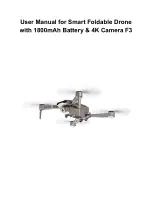
that the booms with grey ActiveBlade bumpers are pointed towards each other. Install prop
straps to help keep props secure while placing ALTA X in the case.
Ensure the ALTA is placed in the case properly by matching the grey ActiveBlase bumpers to
the colored marks in the pelican case.
Pay special attention to the external GPS, 900/868MHz Telemetry radio and optional
accessories if installed (FPV camera and Tx) when putting the ALTA X back into its case
Emergency Procedures
Emergency Guidance
The emergency procedures listed in this section are the recommended practices for handling
the aircraft in the event of an aircraft emergency. This guidance should be considered and
applied as necessary.
The risk of an emergency can be reduced substantially through proper aircraft maintenance,
by performing thorough inspections before and after all flights, and with careful pre-flight
planning.
Emergency situations are dynamic events, and not all conditions or procedures can be
anticipated or applied during the event. These procedures are not a substitute for a
thorough understanding of aircraft systems and sound pilot judgment.
In general, if an emergency occurs, three basic actions can be applied to most situations:
1. Maintain aircraft control—Small emergencies can quickly escalate if the pilot is
distracted attempting to troubleshoot the problem. Always maintain visual contact
with the aircraft during an emergency to reduce the likelihood of losing orientation.
2. Analyze the situation—Once the aircraft is stabilized, begin to assess the cause of the
emergency if practical.
3. Take appropriate action—In many cases, the appropriate action will be to land the
aircraft as soon as possible. Always consider the safety of yourself and others before
attempting to save the aircraft in an emergency.










































